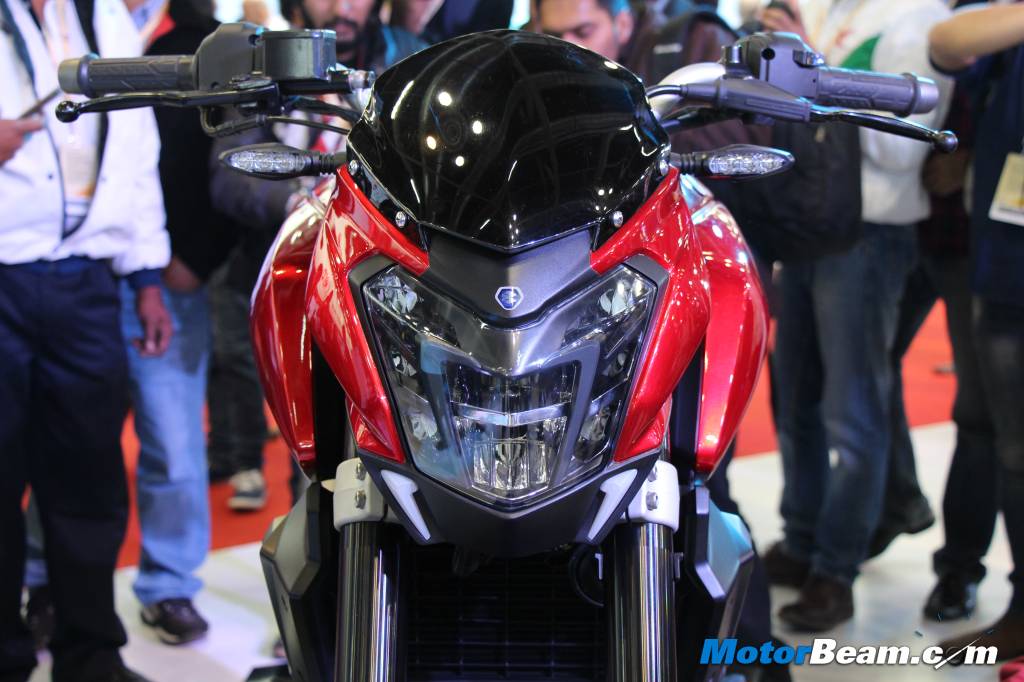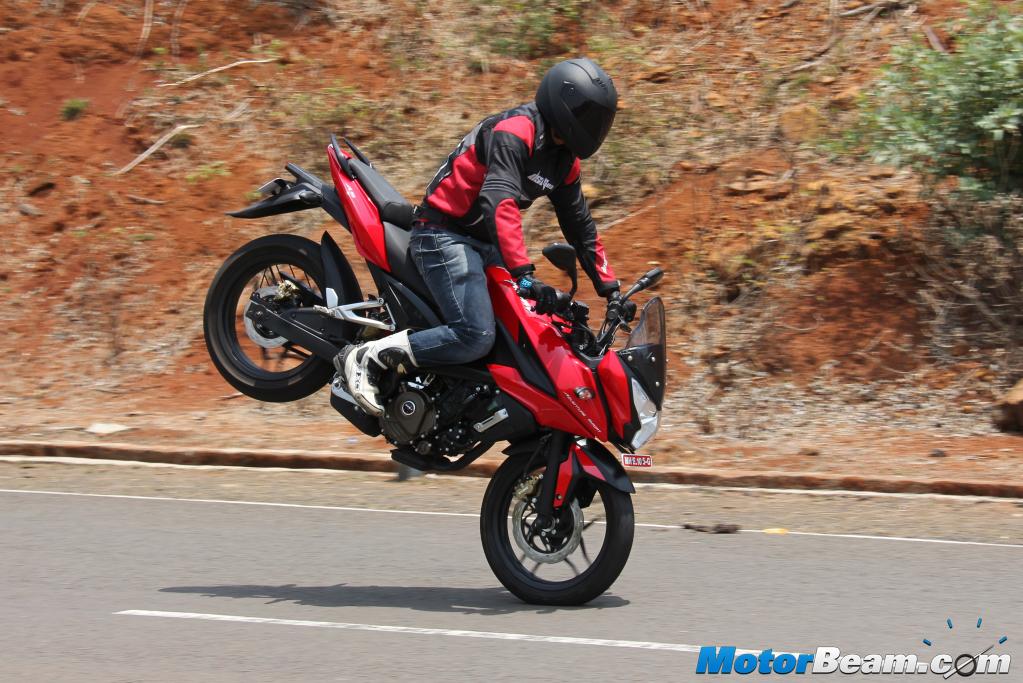Tank recesses could have been more pronounced to let the riders lock their knees when attacking corners
Riding Dynamics – Suspension duties on the Pulsar 150 are performed by telescopic forks at the front and adjustable shock absorbers at the rear. Ride quality is pliant over bad roads and the Pulsar plainly dismisses small road undulations without transmitting them to the rider. However, it continues to be underpinned by an old double cradle frame which doesn’t give it the much-needed poise around corners. At 144 kgs, the Pulsar 150 is no feather-weight and lacks the agility and steadfastness that one would normally associate with this class of motorcycles. Braking department is headed by a 240 mm disc rotor at the front and the rear wheel gets a drum brake. The front brake offers a positive feel and good stopping power but the rear one isn’t quite up to the task. Anyway, we aren’t complaining as braking action involves the front end in higher proportions and the Pulsar 150’s performance is satisfactory in that regard.
Coupled with the excellent fuel efficiency figures, the Pulsar 150 provides a tank range of around 750 kms
Verdict – Every update to the Pulsar series has been worthwhile and met with appraisals from the large fanbase. The 2017 series is no different as, along with the entire range, it introduces a whole lot of changes to the Pulsar 150. This update was controversial as the engine characteristics were toned down in the interests of lower emissions. With improved NVH levels, smoother gearshifts and better power delivery, the Pulsar 150 is undoubtedly a safer bet than before. However, everything that glitters is not gold! Bring the Pulsar NS 160 into the picture and the Pulsar 150 starts to show its age. Enthusiasts opting for the 150 are going to be stuck with an age-old frame, dated suspension and probably a design which is too long in the tooth now. Moreover, Bajaj has extracted the rush from the top-end of this motor by prioritising power delivery lower down the rev range. This has taken away the famed fun-to-ride nature of the Pulsar and made it more of a city commuter. To sum it up, the 2017 Pulsar 150 remains a viable alternative for users who want a proven product but for an enthusiast, the brand itself has made it irrelevant with the launch of the NS!
Headlight switch is missing due to the introduction of AHO on the entire Pulsar series
Whats Cool
* Smooth and refined package – engine, gearbox and clutch
* Fuel efficient motor with healthy fuel tank capacity
* Strong low-end performance, improved throttle response
* Comfortable riding posture and plush suspension setup
* One of the most tried and tested products in the country
Whats Not So Cool
* Looks dated in front of the competition
* Unimpressive outright performance, lacks top-end punch
* Isn’t confidence inspiring around corners
* Fit and finish still leaves a lot to be desired
Alternatives: Honda CB Unicorn 150, Hero Achiever, Yamaha SZ-RR V2, TVS Apache 160
The Pulsar 150 is a still a great package for those upgrading from sub-110cc motorcycles
2017 Pulsar 150 Specifications
* Engine: 149cc, Air-Cooled, 4-Stroke, Single-Cylinder
* Power: 13.8 BHP @ 8000 RPM
* Torque: 13.4 Nm @ 6000 RPM
* Transmission: 5-speed Manual
* 0-100 km/hr: 21.17 seconds
* Top Speed: 110 km/hr
* Fuel Consumption: 50-55 km/l
* Fuel Type: Petrol
* Frame: Double Cradle
* Suspension: Telescopic Forks (Front), 5-Step Adjustable Nitrox Shock Absorbers (Rear)
* Tyres: 80/100/17 (Front), 100/90/17 (Rear), MRF Zapper
* Brakes: 240 mm Disc (Front), 130 mm Drum (Rear)
2017 Pulsar 150 Dimensions
* Length x Width x Height: 2055 mm x 755 mm x 1060 mm
* Wheelbase: 1320 mm
* Ground Clearance: 165 mm
* Seat Height: 785 mm
* Fuel Tank Capacity: 15-litres
* Kerb Weight: 144 kgs
[wp-review id=”204659″]




